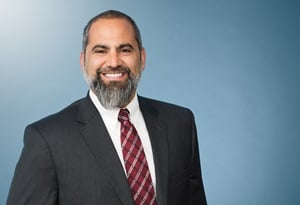These Initiatives Could Power an Infrastructure Overhaul
The Energy & Environment Symposium can be viewed in full via a full LiveStream recording of the event.
Congress and the Trump administration remain united in the desire to pass an infrastructure package (or packages) this year. Both branches have made infrastructure progress in recent months, as the 2018 Omnibus Appropriations law included $20 billion for infrastructure, and the Trump administration has continued to advance infrastructure priorities through regulatory authorities and processes. But despite interest and demand for a larger infrastructure package, finding ways to fund it continues to be a legislative stumbling block.
President Trump is calling for an investment of $200 billion, with the hopes of leveraging $20 billion in federal funding for $200 billion in private investments. As discussed at Faegre Baker Daniels’ fifth annual Energy & Environment Symposium, there are a number of initiatives that could facilitate this level of investment. Most would require legislative action — though there may also be opportunities for the Trump administration to leverage private capital.
The following are two of the funding proposals that are currently being considered.
Changes to the National Gasoline Tax
The national gasoline tax has not been increased since 1993, and its use as an issue in political ads during the 1994 election cycle fueled the perception that increasing the tax is a political third rail. The first speaker at the Symposium, U.S. House Committee on Transportation and Infrastructure Chairman Bill Shuster of the House Transportation and Infrastructure Committee, publically endorsed an increase in the gasoline tax. He noted, however, that it probably would not be feasible until after the 2018 November elections, during a lame duck session.
Later in the day, Michelle Nellenbach from the Bipartisan Policy Center referenced recent polling data that suggests that the American public would support an increase in the gasoline tax, provided it was spent directly on maintaining and upgrading roads.
One of the justifications for increasing the national gasoline tax is the fact that increased motor vehicle fuel efficiency — and the growing popularity of electric and hybrid vehicles — has reduced revenue for the Highway Trust Fund. One way to mitigate these losses would be to implement a mileage-based approach that charges for road use rather than fuel consumed, potentially offering a more sustainable revenue stream for the Highway Trust Fund than the current excise tax on fuel.
The Mileage Based User Fee Alliance, which has been active since 2010, has been advocating for mileage-based user fees as the best and most sustainable alternative for future funding on the highway program. The most recent highway authorization bill, the FAST Act, created the Section 6020 grant program to support alternative funding approaches for highway funding to accelerate the development of the mileage based approach. More than half a dozen Section 6020 pilots are now underway across the country.
Public-Private Partnerships
Public-private partnerships (P3) are agreements between public agencies and private sector entities to provide public services through a partnership arrangement. Local governments around the country have been increasingly utilizing these partnerships for infrastructure purposes such as private toll roads, water and sewer utility services and even parking meter management. However, if the Trump administration is successful in leveraging $20 billion in federal funding for $200 billion in private investment, then more progress will need to be made to encourage P3 projects by the federal government in order to ensure the full leveraged amount.
At the Symposium, multiple speakers raised the concept of bundling P3 infrastructure projects. Canada has made some progress in this regard and might provide some valuable lessons as Congress and the Trump administration considers this concept. Bundling works by combining several smaller projects across several communities to provide savings on design and construction costs through economies of scale, thereby providing a large enough project to attract private funding. The private sector would have more financial stability in multiple projects, while local governments would feel more protected by the “not going it alone” mindset that has stalled projects in some communities.
These are just two of the mechanisms for funding the build-out in infrastructure. While there is not yet consensus on how to finance the infrastructure proposals, Republicans, Democrats the Trump administration and Congress are all in favor of finding new revenue streams to encourage infrastructure investments, so stakeholders can expect more funding ideas to enter the public debate.
The material contained in this communication is informational, general in nature and does not constitute legal advice. The material contained in this communication should not be relied upon or used without consulting a lawyer to consider your specific circumstances. This communication was published on the date specified and may not include any changes in the topics, laws, rules or regulations covered. Receipt of this communication does not establish an attorney-client relationship. In some jurisdictions, this communication may be considered attorney advertising.


